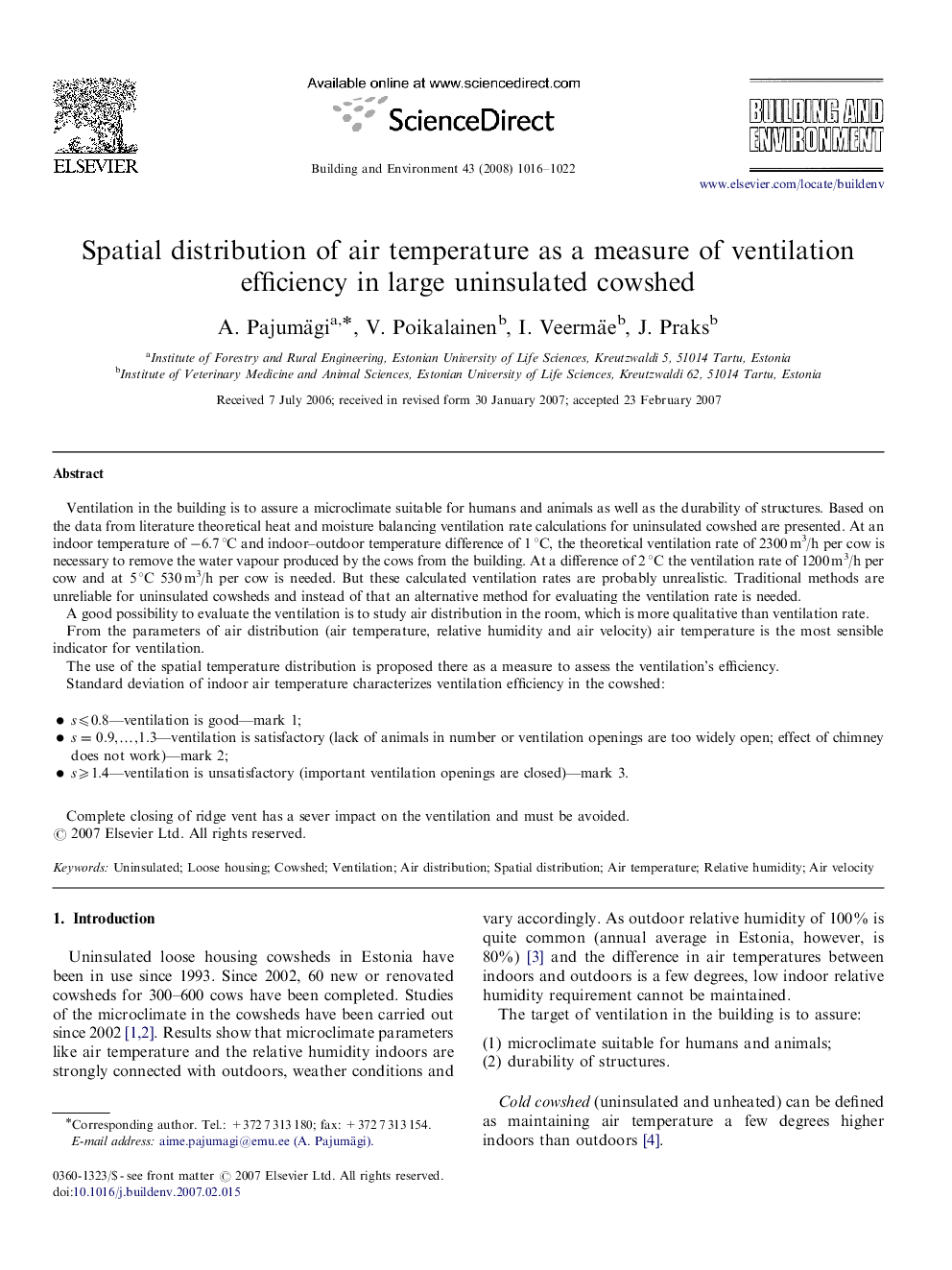| Article ID | Journal | Published Year | Pages | File Type |
|---|---|---|---|---|
| 249813 | Building and Environment | 2008 | 7 Pages |
Ventilation in the building is to assure a microclimate suitable for humans and animals as well as the durability of structures. Based on the data from literature theoretical heat and moisture balancing ventilation rate calculations for uninsulated cowshed are presented. At an indoor temperature of −6.7 °C and indoor–outdoor temperature difference of 1 °C, the theoretical ventilation rate of 2300 m3/h per cow is necessary to remove the water vapour produced by the cows from the building. At a difference of 2 °C the ventilation rate of 1200 m3/h per cow and at 5 °C 530 m3/h per cow is needed. But these calculated ventilation rates are probably unrealistic. Traditional methods are unreliable for uninsulated cowsheds and instead of that an alternative method for evaluating the ventilation rate is needed.A good possibility to evaluate the ventilation is to study air distribution in the room, which is more qualitative than ventilation rate.From the parameters of air distribution (air temperature, relative humidity and air velocity) air temperature is the most sensible indicator for ventilation.The use of the spatial temperature distribution is proposed there as a measure to assess the ventilation's efficiency.Standard deviation of indoor air temperature characterizes ventilation efficiency in the cowshed:•s⩽0.8—ventilation is good—mark 1;•s=0.9,…,1.3—ventilation is satisfactory (lack of animals in number or ventilation openings are too widely open; effect of chimney does not work)—mark 2;•s⩾1.4—ventilation is unsatisfactory (important ventilation openings are closed)—mark 3.Complete closing of ridge vent has a sever impact on the ventilation and must be avoided.
